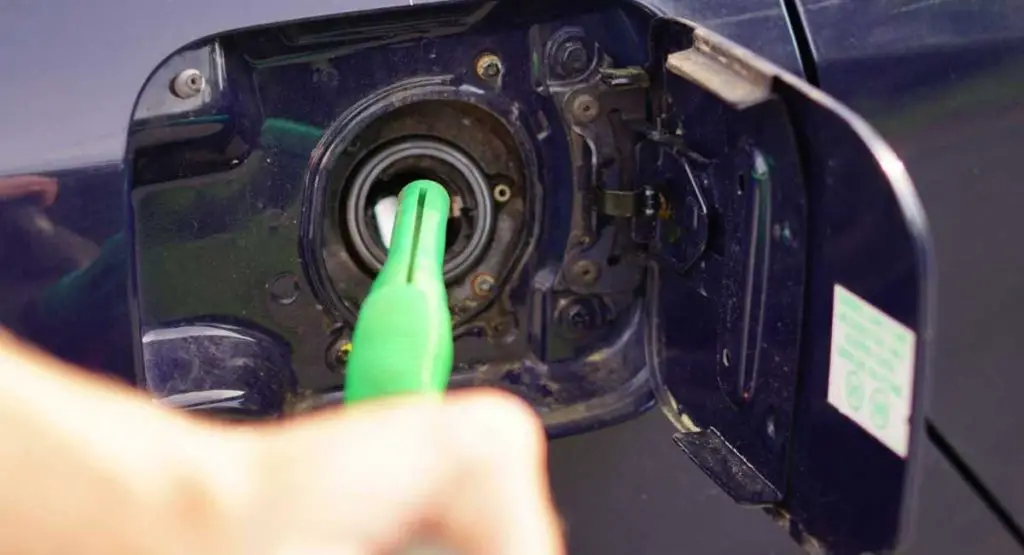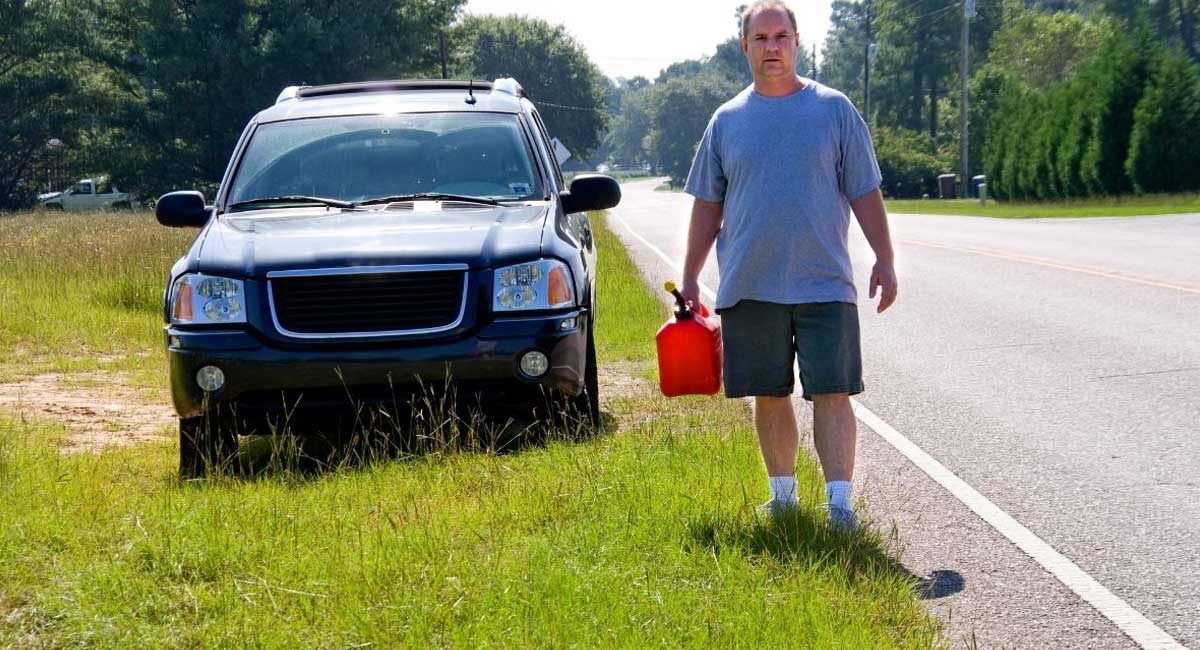If you’re wondering how to siphon gas out of a newer car, you’re in the right place! Siphoning can be handy in emergencies or as a routine part of car maintenance.
No matter your reason for wanting to learn how to siphon gas out of a newer car, learning this skill may come in handy. Knowing how to siphon gas can actually be helpful in a lot of circumstances such as when you run out of gas miles from the city, have to winterize a car, or simply want to refill without having to stop at a gas station.
Countless people attempt to siphon gas from one of their new cars, only to run into a roadblock or two. In the event of a rollover, for example, most newer model cars have emergency valves that prevent gas from siphoning.
There are many ways to siphon gas out of a new car, you just need to know the best methods and have the right tools!
Using a Professional Siphoning Tool
Siphoning tools can help to siphon gas from the fuel tank for maintenance purposes. These are generally the safest and most convenient ways to siphon. Siphon tools are also a better option for new cars because newer cars have a protection system to help avoid siphoning while also protecting the gasoline from leaking from the fuel tank.
Professional siphons come in all sorts of sizes and lengths, but they all include a relatively long tube with a hand pump attached to get the siphoning started. The hand pump can be of various types, but the majority are single-directional pumps designed to pull only one way.
If you need a small quantity of gas, keep an eye on the gas canister so you know how much you’ve siphoned from the gas tank.

Producing Pressure in the Tank to Siphon Gasoline
If you don’t have a professional siphon tool on hand, but have a considerably longer tube or two different siphon hoses, you can use the air pressure siphoning technique.
Siphoning is the process of sucking gas through a pipe or tubing into a new container. Although clear tubing is preferable because it allows you to see the gasoline move through the hose, opaque tubing will work just fine whenever you’re in an emergency situation because there’s no risk of fuel getting into your mouth.
This method involves inserting a pipe into the gas tank and putting the other end into a gas can sitting on the ground. The air pressure in the tank will likely push the standing fluid into the tubing and cause it to flow through to the other end, forming a coherent and consistent flow of liquid.
Due to airflow and the collaborative nature of fluids, the gas will continue to flow. You can speed up the process by using a pump to quickly create air pressure on the exiting end of the pipe and get the gas making its way to the canister quicker.
Mouth-Siphoning Method
Mouth siphoning can be used only when there are no other options, such as if the tube you have isn’t long enough to cut in half for the air pressure approach.
You’ll insert one end of the tube into the gas tank when mouth siphoning. Place the fuel container on the ground next to you, and use your mouth to pull gas from the tank and into the hose.
Keep a close eye on the tube; the gas will move fast, and you wouldn’t want to get any in your mouth if at all possible. As soon as you see gas coming up, quickly plug the tube and transfer the end to the waiting fuel container.
Precautions
Gasoline contains a lot of chemicals, known as hydrocarbons, that are toxic to humans. Swallowing gas or breathing in its vapors can cause lots of symptoms, such as difficulty breathing, irritation, vision loss, stomach pain, vomiting, extreme tiredness, among others.
If you try this method of siphoning, take every precaution to avoid swallowing any gasoline or breathing in vapors without ventilation. If the gas does enter your mouth, spit it out and flush with water. Go to the hospital for an emergency examination as soon as possible or call 911 if you’re experiencing irritation.
The sudden sensation of fuel can easily cause you to choke or cough if gasoline gets in your mouth. When this happens, gas can potentially go down your throat and enter into the lungs, and even a small quantity of gas entering into your airways is enough to cause damage. When the gas enters the lungs, certain things happen.
Gasoline, itself, is an irritant and may cause pneumonia. It can also prevent oxygen from being absorbed into the small blood vessels. When something like this happens, you can see changes on your X-ray in less than a few hours. Oxygen deficiency in the blood can cause serious health problems, including respiratory arrest, coma, and death.
Situations in Which You May Need to Siphon Gas
There are situations in which knowing how to siphon gas could be useful. The two main ones are for winterizing cars that are only used seasonally and removing gas from a car that requires an empty gas tank to be repaired safely and properly.
Even though gas can separate over time, you’ll want to remove the old gas from the tank in both of these cases. The longer the gas is isolated, the worse it’s likely to be, both for gas performance and for your car’s gas tank and fuel system.
In some cases, emergency services may be able to come and give you a ride to the nearest gas station, but not every country is able to send highway emergency workers to the more remote areas of their country. If help isn’t immediately available, your safest choice may be to siphon a few liters of fuel from another vehicle, preferably friends or family who have been following you.
Otherwise, a kind driver may pull over and offer you enough gas to get you to the next gas station. You may also have to siphon gas out of a vehicle if you think the gas is contaminated or if you need to perform certain types of car maintenance.
FAQS
Q: Can You Siphon Directly From One Car to Another?
A: Yes! As long as the gas level in the car, you’re siphoning from is greater than the side of the tube where the gas comes out.
Q: Is it Possible to Siphon Gas if a Car is on a Hill?
A: Yes! When siphoning, a pressure difference is created, allowing the flow of gas to overcome the force of gravity.
Q: How Can We Dispose of Bad Gas?
A: Bad gas (or any gasoline for that matter) is toxic and, if poured onto the grass, can seep into water systems and harm people and animals. Most communities will have a gas disposal facility. Do some research into the facilities in your area to find a safe place to dump old gasoline and never expose the environment to gasoline pollution.
Q: How Do I Know if My Car Has an Anti-Siphon Device?
A: The only way to know whether your car has an anti-siphon device is to read the user’s manual or look up the make and model on the internet.
Conclusion
It’s a lot more difficult than you might think to learn how to siphon gas out of a newer car. That said, knowing how to do it could make all the difference in an emergency situation, and you never know when you’ll need extra gas for your car.
If you don’t want to siphon fuel with your mouth, you can use one of the other methods. Instead of using air pressure to initiate flow, insert a second, shorter tube into the gas tank and blow into it to create pressure that will cause fuel to flow out. A siphon pump is a great tool to have on hand in case of an emergency or for daily tasks.
Keep in mind that you should never siphon gas from cars that you don’t have permission to siphon from. If you plan to travel to a remote location, it’s a good idea to bring extra fuel with you for the trip.


